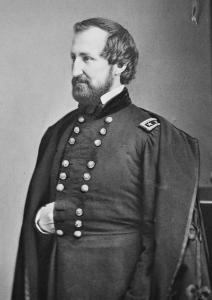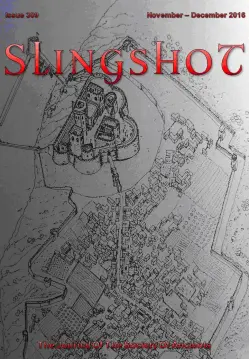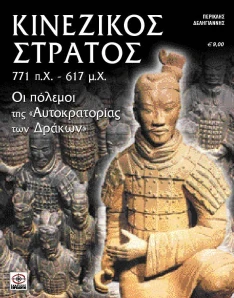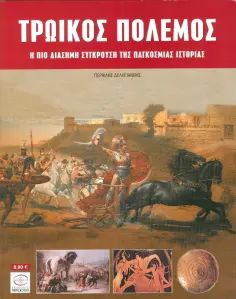Union infantry reenactment (copyright: EPA).
.
By Periklis Deligiannis
.
(OK, I know that you are a little disappointed when I’m not posting on ancient and medieval topics, but as you have probably guessed the Colonial Americas and the American Civil War are among my favorite topics. This article is a summary of the chapter “The Battle of Stones River or Battle of Murfreesboro” of my book “The Civil War”)
.
In July 1862, the skilful Confederate Commander in Chief in the West, General Beauregard, was assigned back to the Eastern Front, but President Davis did not define a replacement for his office. The Confederate president confined in assigning the thrice distinguished in the Mexican War, Major General Braxton Bragg, as general commander of the armies at the Tennessee-Mississippi front, who was from now on the unofficial Commander in Chief in the West. Braxton Bragg and his subordinates Major Generals Kirby Smith and Earl Van Dorn started to prepare the Confederate counterattack in order to recover the lost territories in the Western Front. Their distressed forces were reinforced and revived by the recent conscription.
 (copyright: US Military Academy)
(copyright: US Military Academy)
.
The general Confederate plans involved three synchronized campaigns in all the fronts from the Mississippi River to Virginia. In the East, General Robert Lee (the new commander of the Army of Northern Virginia) would invade Maryland. On the Western Front, the armies of Bragg and Smith would launch major offensives to Kentucky rushing from Chattanooga and Knoxville respectively (southeastern Tennessee). Simultaneously, Van Dorn would campaign from the Mississippi State against Grant’s army in western Tennessee. If he could manage to force back Grant’s army, he would then join Bragg and Smith somewhere in Kentucky. The ultimate aim of the Southerners was to encourage the (Southern after all) states of Maryland and Kentucky in leaving the Union and joining the Confederacy. Much depended on the speed of their march, the communications and the logistics.
The success of the Confederate plan would also yield benefits on the diplomatic field because Britain and France would probably acknowledge the C.S.A. as a sovereign state – a much desired aim of the Richmond government. The French Emperor Napoleon III wanted to promote his plans on turning Mexico to a French dominion or semi-colony, but he would not officially acknowledge the Confederacy if the British did not do the same. However, the British were waiting patiently watching the progress of the war.

Major General Braxton Bragg
.
The Confederate attack in the West began in September 1862. Bragg surprised Maj. Gen. Don Carlos Buell, his opponent Federal commander, by a rapid march through East Tennessee to Kentucky. Buell in order to avoid flanking vacated Central Tennessee and North Alabama which he had occupied earlier, falling back to Kentucky. Thus Bragg regained those regions without a fight, but did not achieve something important in Kentucky. After several maneuvers, the armies of Bragg and Buell met on October 7 in Perryville, Kentucky. Buell had at his disposal 60,000 Union soldiers against the 27,000 Confederates of Bragg. The battle began when groups of rival soldiers searching for water, came into conflict. The opponent generals did not have full knowledge of the locations of the enemy units, nor knew the size of the respective enemy army; thereby the resulting battle evolved almost randomly, especially through the initiatives of various officers. Especially Buell, who had his headquarters located about 2 miles from the battlefield, had not even realized the seriousness of the conflict because of the weather. The Union commander realized what was happening just at the end of the battle. However the battle of Perryville was deadly, especially after noon. The end came with the advent of the night. The Union side had 4,200 casualties while the Confederates had 3,400. Although the latter caused more casualties to the Federals, their own losses were actually heavier because of their inability to compensate for (in contrast with the Union side with its almost inexhaustible manpower).

The detached Confederate ‘commando’ cavalry under Nathan Forrest and John Hunt Morgan and a part of Bragg’s cavalry under Joseph Wheeler caused major problems on the march of Rosecrans’ army, operating behind enemy lines (Photo copyright: Matt Rourke / AP Photo).
.
When Bragg realized that the Federals numbered more than twice the figure of his men, retreated leaving Perryville but Buell did not come after him. When President Lincoln was informed about Buell’s decision, lost his patience and removed him from his commission as commander of the Army of Cumberland (former Army of the Ohio), handing it to Major Gen. William Rosecrans (see below). Bragg had retreated to southeastern Tennessee. Meanwhile Confederate Maj. Gen. Van Dorn, who had attacked from the Mississippi State to Corinth, had also failed in his mission because of the stubborn defense of Rosecrans’ small army (3-4 October). It was this success of Rosecrans which led Lincoln to his mentioned promotion. At the same time, Maj. Gen. Smith had marched to Frankfurt (Kentucky) before joining Bragg in Perryville and falling back with him in Tennessee. Thereby the Confederates after the general failure of their counterattack mainly because of their lack in manpower, abandoned their efforts to encourage Kentucky in joining the Confederacy.
Confederate withdrawal from Kentucky and maneuvering leading to the battle of Stones River. Murfreesboro and Vicinity: Battle of Stones River (US Military Academy)
.
Lincoln hoped that Rosecrans would be more energetic than his predecessor, so the Federal Ministry of defense was sending continuously to the latter admonitory or even threatening letters to take action against Bragg’s army. But Rosecrans had problems with supplying his army which was encamped in Nashville, because the operation of the Louisville-Nashville railway line was constantly interrupted by Confederate commandos enhanced with local Kentuckians. Only on December 26, Rosecrans managed to gather sufficient quantities of supplies in Nashville and marched against Bragg, aiming at the strategic town of Chattanooga which controlled the approaches to East Tennessee and Georgia. Bragg had occupied a defensible location abutting Stones River near Murfreesboro, just 50 miles southeast of Nashville, in order to stop the Federal march to Chattanooga. Rosecrans’ army numbered 47,000 men against 38,000 of Braxton Bragg who had received reinforcements after the battle of Perryville, taking advantage of Buell’s negligence.

Major General William Rosecrans
.
Meanwhile, the detached Confederate ‘commando’ cavalry units under Nathan Forrest and John Hunt Morgan, continued to cause large sabotage in the Union railways and telegraph network behind enemy lines, while Bragg sent a part of his cavalry under the 26-years old commander, Joseph Wheeler, against Rosecrans’ army to slow his march using hit-and-run tactics. On December 29, Wheeler’s horsemen conducted an outflank maneuver who led them to the Federal rear. The Confederate cavalrymen wrought havoc in the supply convoys of Rosecrans’ army and captured part of the ammunition stock.
Despite Wheeler’s success, on 30 December Rosecrans – “old-Rose” as his men used to call him – reached the enemy positions on Stones River and at the same night pitched his army in battle line. Both opponent generals lined up their forces in order to perform a left-flank envelopment maneuver on the enemy.

Battle of Stones River (Smithsonian Institution).
.
Rosecrans was planning to outmaneuver the Confederates cutting them from their base in Chattanooga, pin them down with their backs to a tributary of Stones and destroy them there. Bragg was planning alike with a similar maneuver to cut the Federals from Nashville, pin them down with their backs to Stones River and crush them there. However the tactical and strategic capabilities of Rosecrans (another lover of alcohol like Grant) did not exceed the general mediocrity of the Union military commanders. Rosecrans neglected to safeguard the line of his army, thinking that it would not be attacked because the Confederates were expecting the Union offensive. He also failed to ensure that the Federal units that would carry out the outflanking maneuver were occupying appropriate positions in order to be able to repel a possible counterattack of the enemy. Rosecrans even attempted to deceive Bragg on the numbers of the Federal right wing, ordering its men to fire up there more camp pyres. However this tactical bluff was made in a so simplistic way that Bragg and his lieutenant, Maj. Gen. Hardee (commander of the Confederate left wing), both experienced commanders, understood immediately that it was a fetch. Finally, Rosecrans’ complacency provided an opportunity for the Southerners to start the battle, thus gaining a major tactical advantage.
.
Periklis Deligiannis
.
CONTINUE READING IN: THE BATTLE OF STONES RIVER or BATTLE OF MURFREESBORO (Part II)









Dec 22, 2014 @ 08:32:30
Battle of Stones River was the bloodiest battle (referring to casualties) of the American Civil War.
Excellent post
Dec 23, 2014 @ 00:22:17
That’s a spoiler! It’s an info that I was going to mention in part II. But in fact, it was the second bloodiest battle of the ACW, refering to the percentage of the casualties on the total figure of the men who fought in it (Gettysburg was the bloodiest).
Thank you Cheilon.
Dec 24, 2014 @ 00:21:16